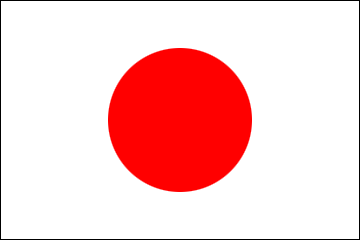More Explanation of Japan's Basic Policy on Handling of the Advanced Liquid Processing System (ALPS) Treated Water at the Fukushima Daiichi Nuclear Power Station (FDNPS):
2021/6/15
March 2021 marked ten years since the accident at Tokyo Electric Power Company Holding (TEPCO)'s Fukushima Daiichi Nuclear Power Station caused by Great East Japan Earthquake. The Government of Japan (GoJ) has been working for the revitalization and reconstruction from the nuclear accident in a steady and stepwise manner, where the management of contaminated water and treated water has been the main issue.
For more than six years, the GoJ has comprehensively studied the handling of water in cooperation with experts, while going through reviews by the International Atomic Energy Agency (IAEA) and engagements with parties concerned. On 13 April 2021, the GoJ announced its basic policy that the discharge of the ALPS treated water into the sea will be implemented at FDNPS, on the premise of maintaining a strict control of the process and minimizing risks. TEPCO, the company responsible for conducting the discharge, will submit plans for the discharge. The discharge is subject to receiving necessary approval from the Nuclear Regulation Authority (NRA). The actual discharge is envisaged to be conducted approximately after two years from now.
First of all, what Japan will discharge is not the contaminated water, which is generated in the building, but the ALPS treated water with sufficient dilution. The ALPS removes almost all kinds of nuclides to meet the regulatory standards for discharge, with an exception of tritium, which exists in nature and is found in rainwater, tap water as well as inside of our body as a form of tritiated water *(Note). Thereafter the ALPS treated water will be diluted more than 100 times before discharge so that tritium will be far below the value of regulatory standards.
According to diffusion simulation, assuming that the ALPS treated water with sufficient dilution is discharged, the result shows that the area where the level of the tritium concentration exceeds the concentration level in the natural seawater is limited to within 2km offshore of FDNPS. Even in the areas, the tritium concentration is far lower than the WHO drinking water guideline value.
Besides, the GoJ will strengthen and enhance monitoring before, during and after the discharge in the surrounding areas, in cooperation with the international community including the IAEA in a transparent manner.
As such, the discharge of the ALPS treated water into the sea would be conducted while firmly ensuring the safety of marine environment and human health. This position of GoJ is firmly supported by the IAEA; Director-General Grossi said Japan’s chosen method is both technically feasible and in line with international practice.
Please find more details about the policy of the GoJ from the link below:
https://www.palau.emb-japan.go.jp/files/100178625.pdf
Note: Carbon – 14 also cannot be removed through purification process, but Carbon – 14 contained in the water stored in tanks is far below the level of national regulatory standards (at the most 1/10th of the standard). After dilution, the level of Carbon – 14 will go down to at most 1/1000th of the standards.
For more than six years, the GoJ has comprehensively studied the handling of water in cooperation with experts, while going through reviews by the International Atomic Energy Agency (IAEA) and engagements with parties concerned. On 13 April 2021, the GoJ announced its basic policy that the discharge of the ALPS treated water into the sea will be implemented at FDNPS, on the premise of maintaining a strict control of the process and minimizing risks. TEPCO, the company responsible for conducting the discharge, will submit plans for the discharge. The discharge is subject to receiving necessary approval from the Nuclear Regulation Authority (NRA). The actual discharge is envisaged to be conducted approximately after two years from now.
First of all, what Japan will discharge is not the contaminated water, which is generated in the building, but the ALPS treated water with sufficient dilution. The ALPS removes almost all kinds of nuclides to meet the regulatory standards for discharge, with an exception of tritium, which exists in nature and is found in rainwater, tap water as well as inside of our body as a form of tritiated water *(Note). Thereafter the ALPS treated water will be diluted more than 100 times before discharge so that tritium will be far below the value of regulatory standards.
According to diffusion simulation, assuming that the ALPS treated water with sufficient dilution is discharged, the result shows that the area where the level of the tritium concentration exceeds the concentration level in the natural seawater is limited to within 2km offshore of FDNPS. Even in the areas, the tritium concentration is far lower than the WHO drinking water guideline value.
Besides, the GoJ will strengthen and enhance monitoring before, during and after the discharge in the surrounding areas, in cooperation with the international community including the IAEA in a transparent manner.
As such, the discharge of the ALPS treated water into the sea would be conducted while firmly ensuring the safety of marine environment and human health. This position of GoJ is firmly supported by the IAEA; Director-General Grossi said Japan’s chosen method is both technically feasible and in line with international practice.
Please find more details about the policy of the GoJ from the link below:
https://www.palau.emb-japan.go.jp/files/100178625.pdf
Note: Carbon – 14 also cannot be removed through purification process, but Carbon – 14 contained in the water stored in tanks is far below the level of national regulatory standards (at the most 1/10th of the standard). After dilution, the level of Carbon – 14 will go down to at most 1/1000th of the standards.
